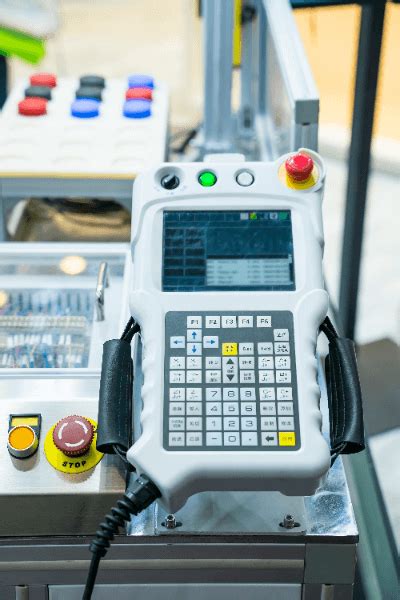The Ingenious Orchestrator: Unveiling the Role of the Robot Industrial Controller
In the realm of industrial automation, precision and efficiency reign supreme. At the core of this automated symphony, stands the maestro – the robot industrial controller. This unsung hero, accounting for an impressive 80% of a robot's functionality, orchestrates a seamless ballet of motion and decision-making.
The Maestro's Baton: Types of Robot Industrial Controllers
The baton that conducts the robotic symphony, the industrial controller, comes in various shapes and sizes, each catering to specific industry needs:
| Type |
Description |
Applications |
| Programmable Logic Controllers (PLCs) |
Rugged, real-time controllers |
Simple to complex manufacturing processes |
| Distributed Control Systems (DCSs) |
Modular, multi-layer systems |
Complex, large-scale industrial plants |
| Motion Controllers |
Specialized in motion control |
Robotics, CNC machines, 3D printing |
| Numerical Control (NC) Units |
Dedicated to machine tool control |
Machining, milling, turning |
| Supervisory Control and Data Acquisition (SCADA) Systems |
Monitor and control processes |
Energy distribution, water treatment, transportation |
The Maestro's Repertoire: Functions of Robot Industrial Controllers
With its intricate algorithms and real-time responsiveness, the robot industrial controller maestro plays a symphony of functions:
-
Motion Control: Directing the robot's movements with pinpoint accuracy
-
Sensor Integration: Gathering data from sensors to provide context for decision-making
-
Path Planning: Calculating optimal paths for efficient robot movement
-
Collision Avoidance: Preventing costly collisions with obstacles and other robots
-
Communication: Relaying information to and from the robot, human operators, and other systems
-
Programming: Configuring and customizing the robot's behavior
The Maestro's Impact: Empowering Industry
The robot industrial controller is not just a cog in the machine; it is the very heart of industrial automation. Its impact is profound:

-
Increased Productivity: Robots work tirelessly, 24/7, boosting production rates
-
Enhanced Quality: Precision control ensures consistent, high-quality products
-
Improved Safety: Robots handle dangerous tasks, protecting human workers from harm
-
Lower Costs: Automation reduces labor costs and material waste
-
Global Competitiveness: Advanced robotics capabilities enhance productivity and innovation, supporting global competitiveness
Stories from the Controller's Diary
-
The Absent-Minded Maestro: A robot tasked with welding intricate parts kept missing the mark, bewildering engineers. After hours of troubleshooting, they discovered the culprit: a bird had nested inside the controller, causing sporadic signal interruptions.
-
The Culinary Conundrum: A restaurant was using a robot to flip burgers. However, the robot's movements became erratic, resulting in an endless stream of airborne patties. It turned out that the controller had been reprogrammed by a mischievous chef to mimic his favorite dance moves.

-
The Robotic Road Rage: Two robots were tasked with transporting heavy boxes. However, due to a controller malfunction, they began bumping into each other like bumper cars. The chaos ensued until the engineers regained control and reconfigured the collision avoidance system.

These humorous tales underscore the importance of meticulous controller programming and maintenance.
Practical Considerations: Selecting the Right Controller
Choosing the right robot industrial controller is crucial for optimal performance. Consider these factors:

-
Application: Match the controller's capabilities to the specific industrial process
-
Scalability: Ensure the controller can handle future expansions
-
Integration: Seamless integration with other systems, such as PLCs and SCADA
-
Support: Access to reliable technical support is essential for troubleshooting and updates
-
Cost: Consider the upfront investment and ongoing maintenance costs
Tips and Tricks for Controller Mastery
-
Test Thoroughly: Extensively test the controller's functionality before deployment
-
Regular Maintenance: Schedule routine maintenance to prevent malfunctions
-
Monitor Performance: Track key performance indicators to ensure optimal operation
-
Train Operators: Provide comprehensive training for operators to maximize controller capabilities
-
Stay Up-to-Date: Regularly update the controller software and firmware to benefit from new features and security enhancements
Common Mistakes to Avoid
-
Inadequate Motion Planning: Poorly planned robot movements can result in collisions and downtime
-
Overlooking Sensor Integration: Ignoring sensor data can lead to errors and safety hazards
-
Neglecting Programming: Inaccurate programming can compromise robot performance
-
Unreliable Communication: Communication issues can disrupt robot operations and cause production delays
-
Lack of Maintenance: Insufficient maintenance can lead to premature controller failure
A Step-by-Step Approach to Controller Success
-
Define Requirements: Determine the specific needs of the industrial process
-
Select the Controller: Identify a suitable controller based on the defined requirements
-
Install and Configure: Install the controller and configure its settings
-
Program the Robot: Develop and test the robot's programs
-
Integrate with Systems: Connect the controller to other systems, such as PLCs and HMIs
-
Monitor and Maintain: Track performance and schedule regular maintenance
-
Optimize Operations: Continuously evaluate and improve the controller's performance
Pros and Cons: Weighing the Options
Pros:
- Consistent and precise robot movements
- Enhanced safety through collision avoidance
- Increased productivity due to automated processes
- Improved product quality through precision control
- Reduced costs through labor savings and efficiency gains
Cons:
- High initial investment cost
- Potential for downtime due to controller malfunctions
- Requires skilled operators and maintenance personnel
- Risk of accidents if the controller is not programmed or maintained properly
- May require additional training for workers transitioning to automated systems
Call to Action: Embracing the Robot Industrial Controller
The robot industrial controller is an indispensable tool for modern industries. By understanding its functions, selecting the right controller for your application, and implementing best practices, you can harness its power to:
- Enhance productivity
- Improve quality
- Boost safety
- Reduce costs
- Increase competitiveness
Embrace the robot industrial controller as the maestro of your automated symphony, and witness the transformation it brings to your operations.

